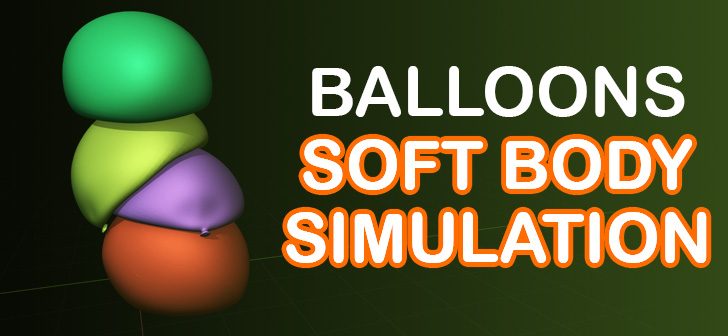The Soft Body Simulation (New for 5) Select a prop or an accessory. You are allowed to select multiple objects to assign the same physics setting at the same time. Activate physics by clicking the Physics Settings (Shortcut: Shift + F9). Enable the Active Physics and press down on the Soft Body tab. Soft Body Simulation. This is a quick exploration of soft body simulation. I’m interested in simple, procedural methods for deforming meshes in response to their collision with other objects, specifically, character meshes made of jelly (slimes!). Apr 04, 2021 fun soft body simulation animation. Hope you enjoy it. If playback doesn't begin shortly, try restarting your device. Videos you watch may be added to the TV's watch history and influence TV recommendations. To avoid this, cancel and sign in to YouTube on your computer.
Google uses cookies and data to:
- Deliver and maintain services, like tracking outages and protecting against spam, fraud, and abuse
- Measure audience engagement and site statistics to understand how our services are used

VICODynamics: Rope/Cloth/Soft-Body Simulation Plugin. A plugin for Unreal Engine 4 to use the VICO Dynamics soft-body physics library. This product contains a code plugin, complete with pre-built binaries and all its source code that integrates with Unreal Engine, which can be installed to an engine version of your choice then enabled on a per. ASMR With Soft Body Tetris Simulation - SoftBody Tetris Animation 6Music: Winter Ride by Twin Musicom is licensed under a Creative Commons Attribution 4.0 li.
 If you agree, we’ll also use cookies and data to:
If you agree, we’ll also use cookies and data to:- Improve the quality of our services and develop new ones
- Deliver and measure the effectiveness of ads
- Show personalized content, depending on your settings
- Show personalized or generic ads, depending on your settings, on Google and across the web
Click “Customize” to review options, including controls to reject the use of cookies for personalization and information about browser-level controls to reject some or all cookies for other uses. You can also visit g.co/privacytools anytime.
This is a quick exploration of soft body simulation. I’m interested in simple, procedural methods for deforming meshes in response to their collision with other objects, specifically, character meshes made of jelly (slimes!). No animation assets are used in this project, the movement and deformation of the characters is all from the soft body simulation.
Play in Unity Editor

Download and open this project with Unity Editor 2018.2. Then start with the simplest scene, by opening Scenes/OneSlimePrototype, and pressing play. To view the point mass locations and springs, click the Gizmos button above the Game window to make sure it is highlighted. Be aware that displaying gizmos in scenes with many soft bodies may have a noticeable effect on framerate.I’ve tested this project with Unity Editor 2018.2.15f1 on Windows 8.1.
Code Sample
I have written this code as a personal project. My code can be found in the Assets/Scripts/ directory, as *.cs files (ignore *.meta files).

Soft Body Simulation Fluid
My Next Steps
- Create a high performance ECS/Job system version, perhaps without using Unity’s collision system
- Create a free form deformation shader that uses the point mass locations, or perhaps just applies shears
- Better enforce the fixed volume of the softbody during compression, modelling a fluid like water, which typically stays close to constant volume
My Previous Steps
Soft Body Simulation Online
- Debug the cause of NaN in the positions (this was due to too low a damping value, which led to very high velocities, and then point masses that were so far apart that their distance was represented as float.PositiveInfinity)
- Simulate lots of soft bodies, with some variety of meshes, in a new test scene. Evaluate frame rate, and check that dimensions of soft body can be configured via the transform’s scale
- See how many springs I can remove until the simulation destabilizes
- Experiment with the public coefficient properties to find values that lead to numerically stable simulation, while allowing for a pleasing amount of deformation
- Assemble point masses in a bounding box shape, and create a spring lattice, adding springs and experimenting with coefficients until the simulation doesn’t collapse over time
- Combine pressure simulation with the mass spring system, to simulate a volume of air
- Alter the pressure simulation to attempt to maintain constant volume, similar to a water balloon (since water doesn’t noticeably compress under typical forces).
- Apply a nonuniform scale on a mesh associated with the soft body simulation
- Give the soft body a periodic jump behavior, to keep things lively
- Create a procedural animation for the build up to the jump by negating the instantaneous jump velocity (impulse) to drive the soft body into the ground, which causes it to compress and then rebound into the air
- Clean up the prototype (MonoBehavior) code a bit
- Write the code
Author
Chris Marchhttps://github.com/chrismarch